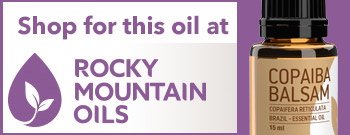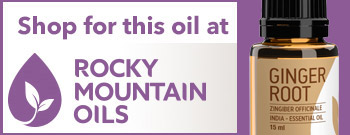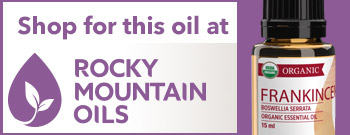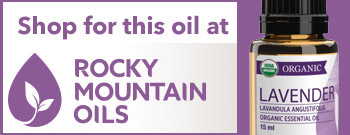How To Reduce Inflammation And Pain Using Essential Oils
Pain and inflammation can be disruptive and problematic--ask anyone who has arthritis. But, drugs are not the answer. Be honest...you do not want to suffer, nor do you want to lose your ability to function while your body is being damaged. I believe essential oils for inflammation and pain can be more effective than drugs and can target constant and occasional bouts of pain.
Pain relievers can be dangerous (R):
- cause death
- damage the gut/liver/kidneys
- result in serious side effects
Read more about the dangers of opioid abuse here.
Essential oils for inflammation:
- is Biblical and documented effectiveness dates back thousands of years
- the oils' origin is from plants: easy, inexpensive and effective soothing relief
- will not trigger dependence like many drug pain relievers
Coupled with proper nutrition and a fasting protocol, essential oils for inflammation can provide you therapeutic benefits while you avoid the nasty side effects of medication.
Essential oils for inflammation and pain:
Copaiba
Copaiba: has a sweet aroma and is great to use on your skin and painful joints. Copaiba has a woodsy light smell and soothing warm properties for sore muscles and joints. As inflammation is an immune response, balance is necessary. Copaiba, one of the essential oils for inflammation has an immune modulating compound that can help prevent triggering autoimmune system problems through over-activation. It effectively:
- reduces pain(R)
- has an analgesic effect which reduces pain signals in the body
- has been shown to be protective of your liver, unlike pain medications
- effective antimicrobial activity against oral pathogens (R)
- reduces oxidative stress and reduces inflammation (R)
Use: 1-2 drops no more than 4 times a day on painful areas (use a carrier oil for sensitive skin--avocado is great for arthritic joints). More is not better!
Ginger
Ginger: tingly powerhouse uses date back to West Africa. We are familiar with it as: a spice for cooking, digestive aide and in tea and lozenges. It is widely known:
- as a reducer of inflammation, pain and stiffness (R)
- to effectively reduce pain and stiffness by up to 40% better than the placebo in arthritis of the knee. (R)
Use: may be diluted with equal parts of a carrier oil and then applied in 2-4 drops on the painful area. It does have anti-coagulant properties, so if you take blood thinners, you need to be cautious.
Frankincense
Frankincense has anti-inflammatory and analgesic qualities. This essential oil:
- improves blood flow(R)
- increases tissue healing (R)
- was a gift to Christ at his birth...considered an oil that could heal all illness
- can help reduce the breakdown of cartilage damage from arthritis
Use: can be gently inhaled directly or applied directly using 2-4 drops on location of pain or swelling. As inflammation can negatively affect collagen in the body, frankincense's work can be supported by both fasting and bone broth consumption. (Later on, I briefly address supporting collagen through fasting and bone broth.*)
Wintergreen
This powerfully strong essential oil:
- helps alleviate muscle spasms
- has highly anti-inflammatory properties
- reduces pain and swelling with its analgesic properties (R)
- is anti-arthritic, antiseptic and astringent
- helps alleviate the symptoms of chronic nerve pain, bone pain, headaches and more
This essential oil for inflammation packs a lot of benefits and is very potent.
Use: for topical use only and in small amounts. Blend 1 part Wintergreen with 2 parts of carrier oil. Apply several drops of combined oils to the affected area and gently rub onto skin. (May irritate sensitive skin.)
Lavender
This familiar essential oil:
- is used in room deodorizers, bath salts, sleep and aroma therapies and lotions
- has calming and soothing qualities that are healing for depression and anxiety(R)
- it can help with chronic pain/arthritis-related issues that affect your sense of well-being(R)
- it has analgesic, anti-inflammatory and calming qualities (R)
Use: can apply 2-4 drops on skin pain location directly out of the bottle. It can also be diluted with a carrier oil (coconut/olive/avocado) and massaged on your skin. It is my favorite oil for minor unbroken skin burns: apply undiluted immediately after kitchen/oven burn.
What are essential oils and where do they come from?
- derived from plant life
- very concentrated
- thousands of pounds plants may produce only a small amount of oil
- buy therapeutic, high grade oils from organic non-toxic environments
- buy those with no additives or chemicals
Usage Tips
These essential oils for inflammation and pain are strong and concentrated with the ability to be absorbed and penetrate cell membranes for cellular level healing. With the above oils:
- dilute with carrier oil (e.g., coconut, avocado, olive oil).
- apply topically to unbroken skin
- make homemade skin creams
- use in Epsom salts bath (increases magnesium absorption for relaxing tight/stiff muscles)
Fasting, intermittent fasting and bone broth are powerful ways to reduce inflammation. Harvard has suggested intermittent fasting could be the center of increase our lifespan, read more here. Add these to using essential oils and you have a powerful tool for your health journey.
For more resources on how to accomplish a bone broth fast, visit: www.drbradgorski.com.







